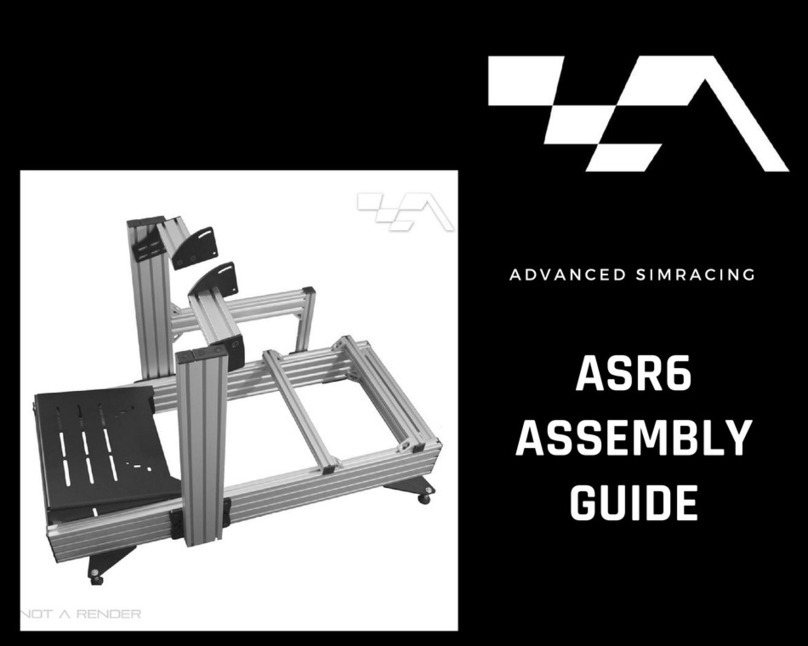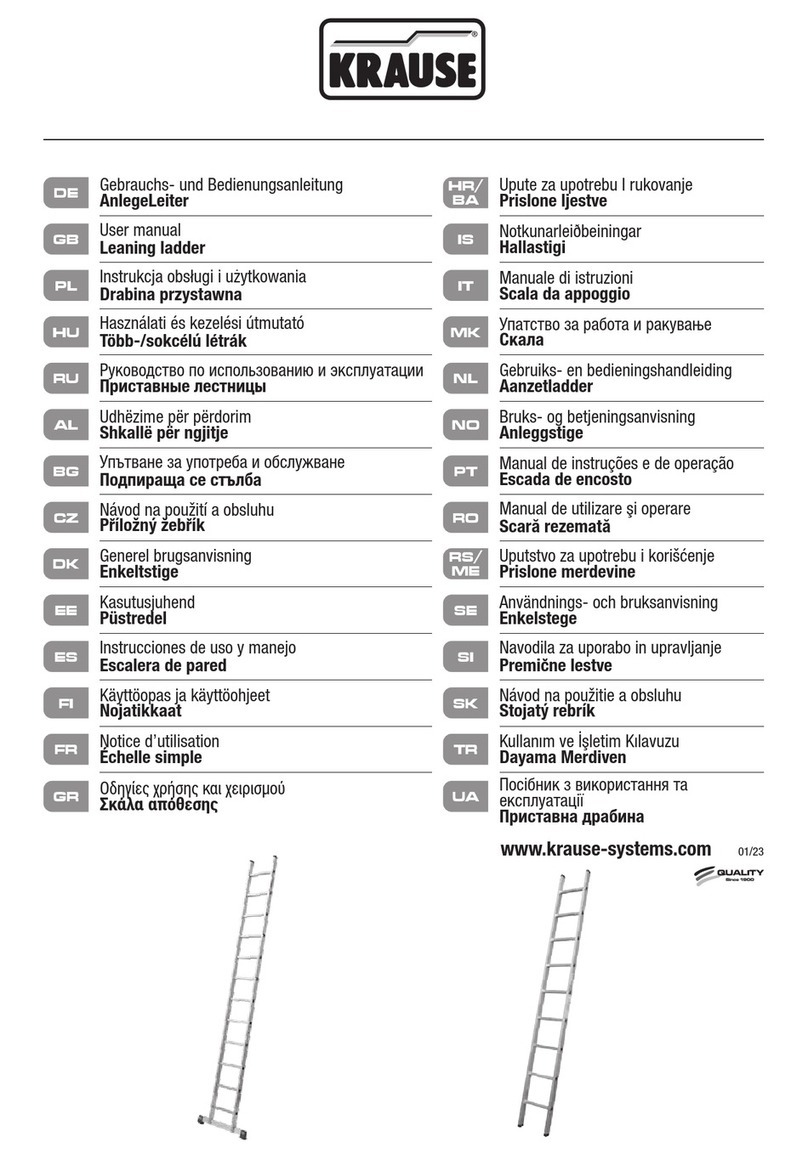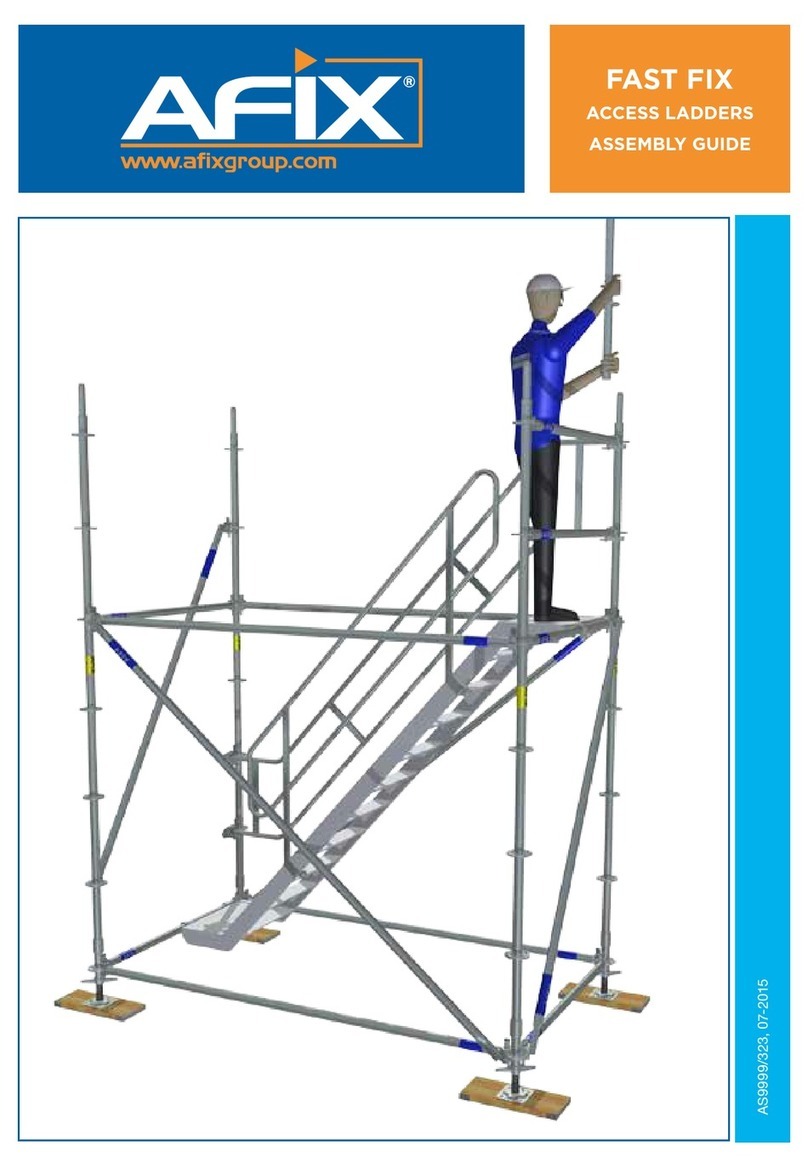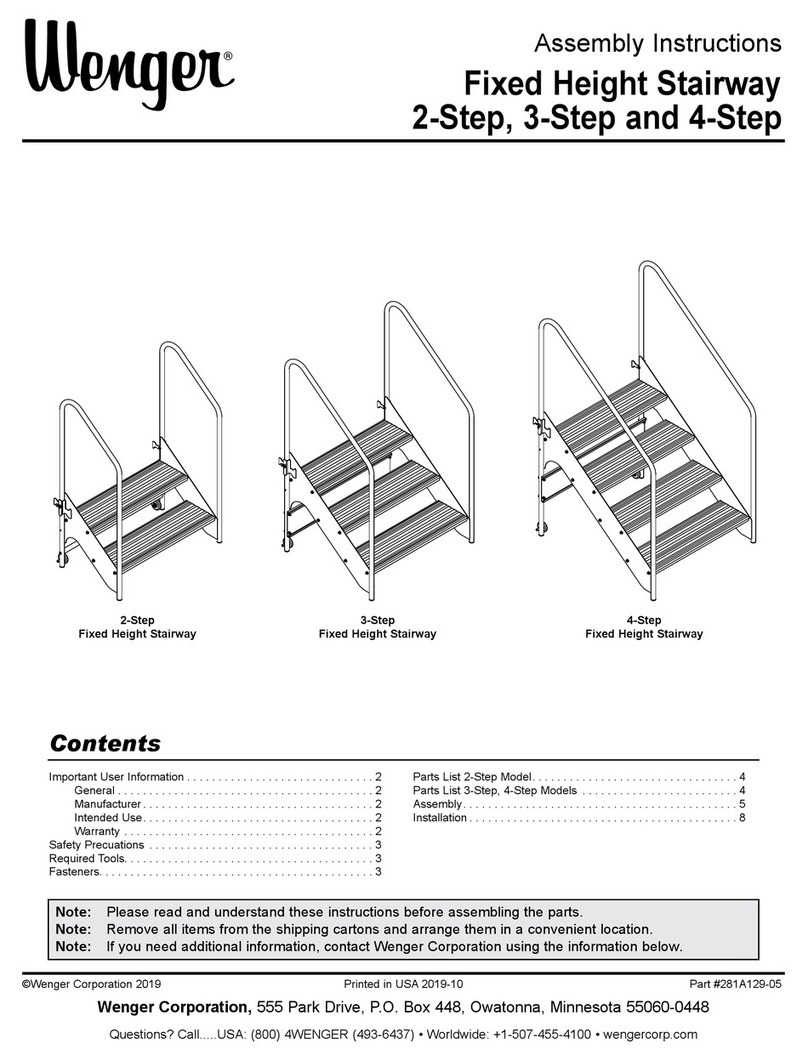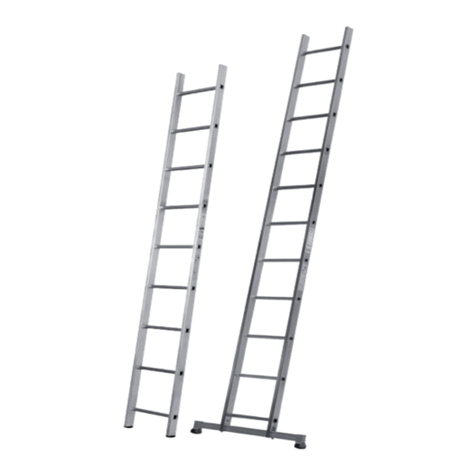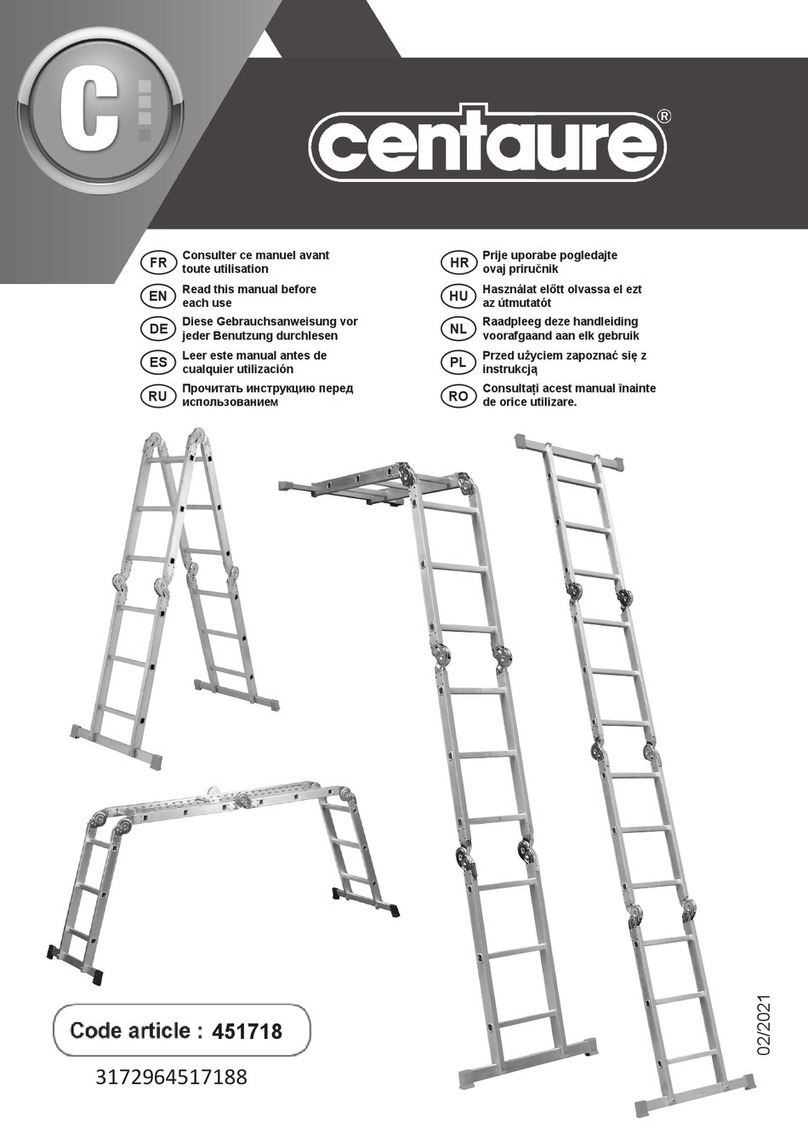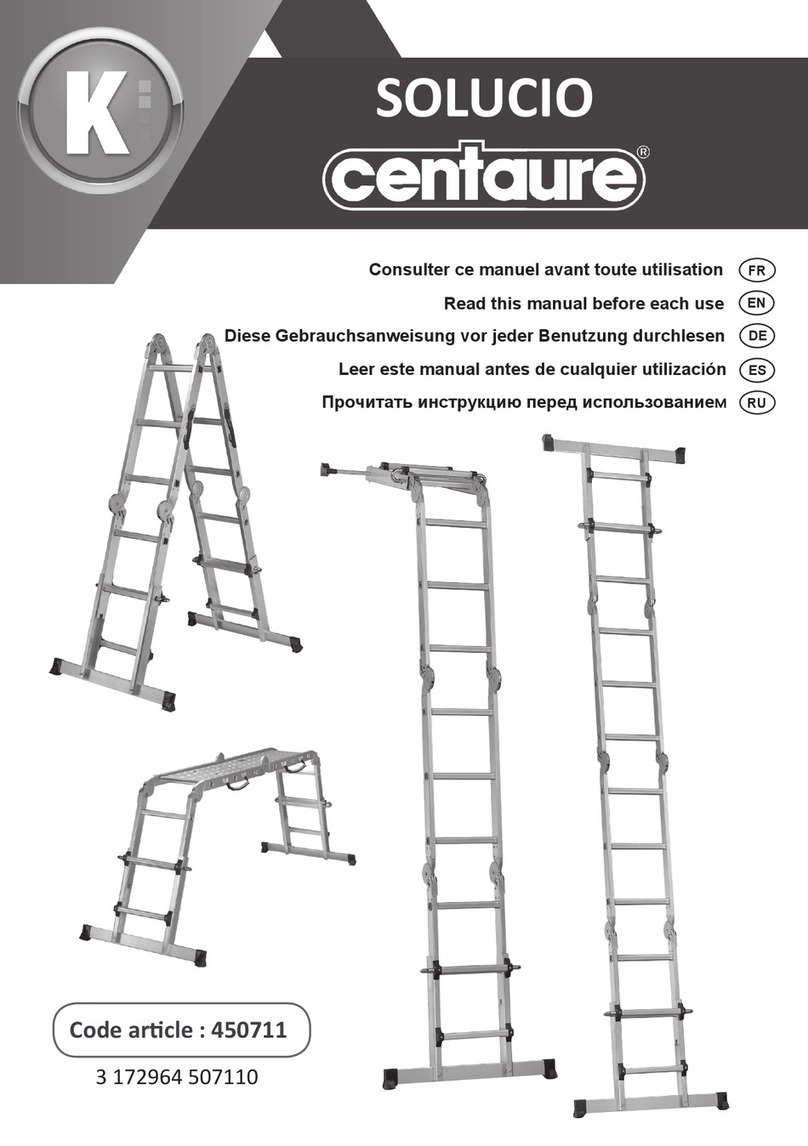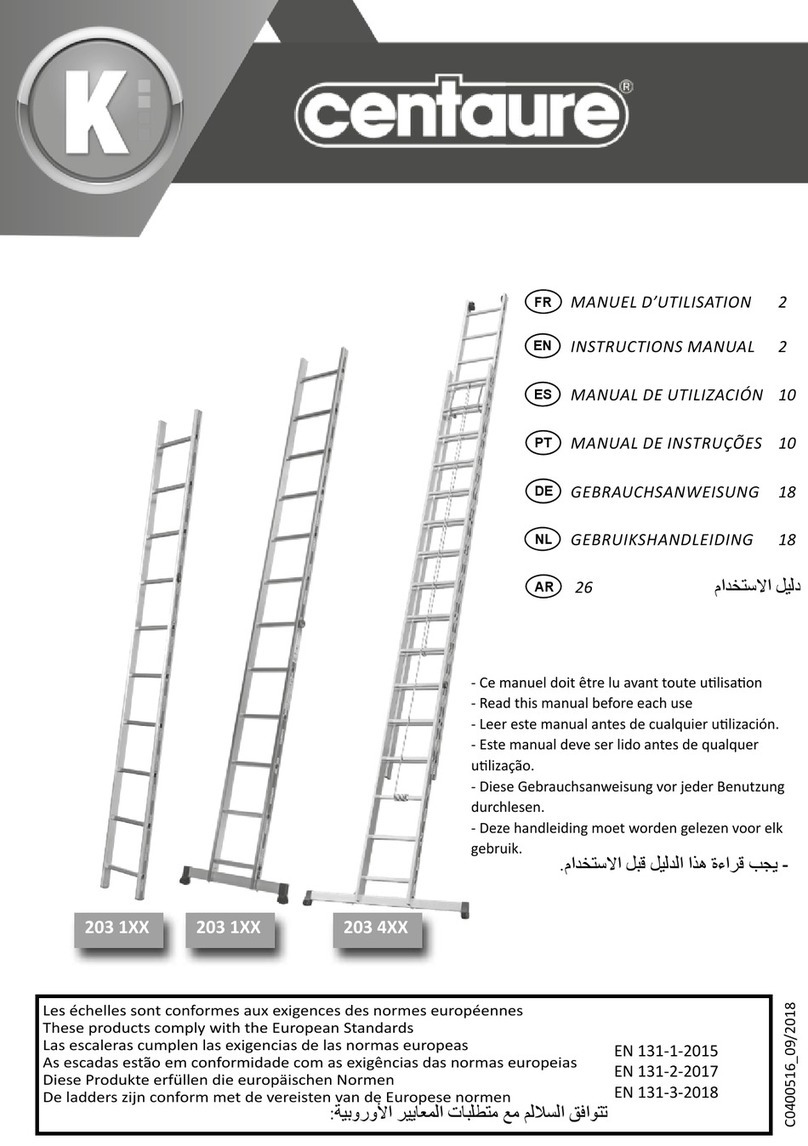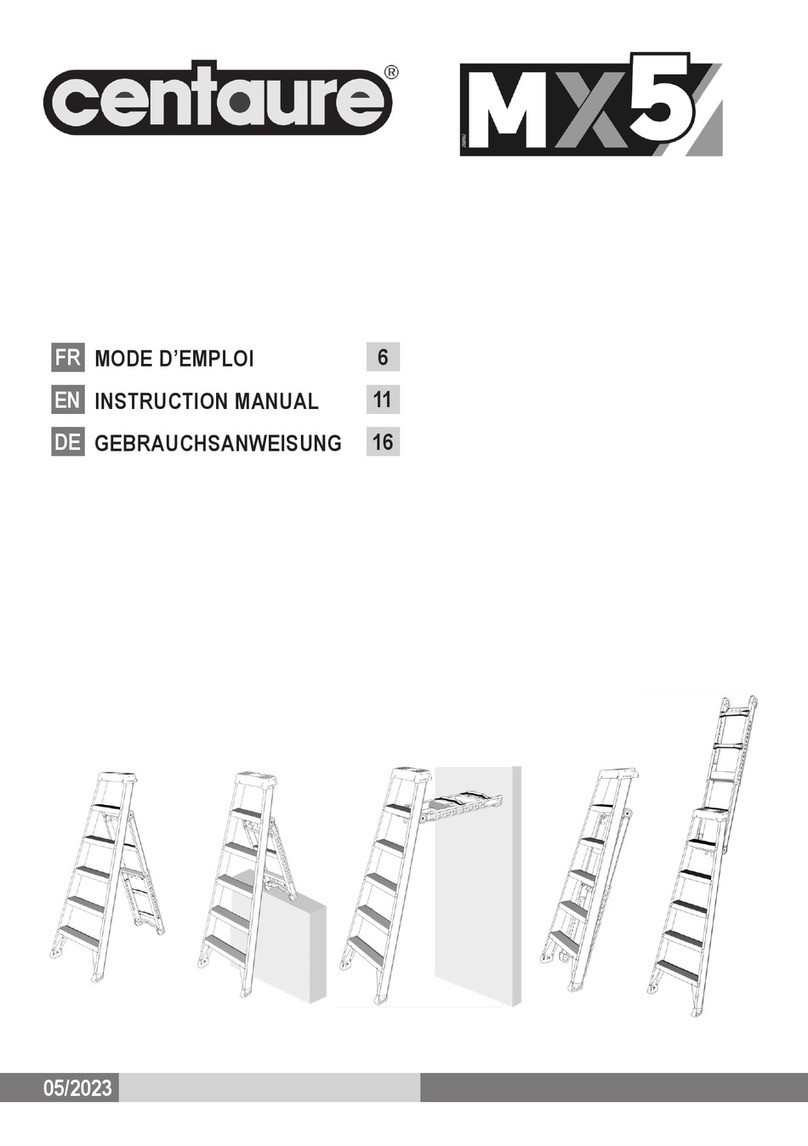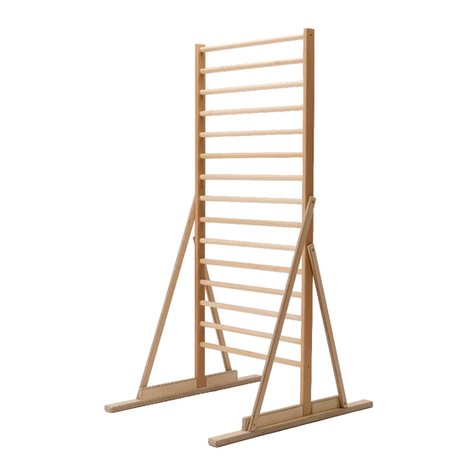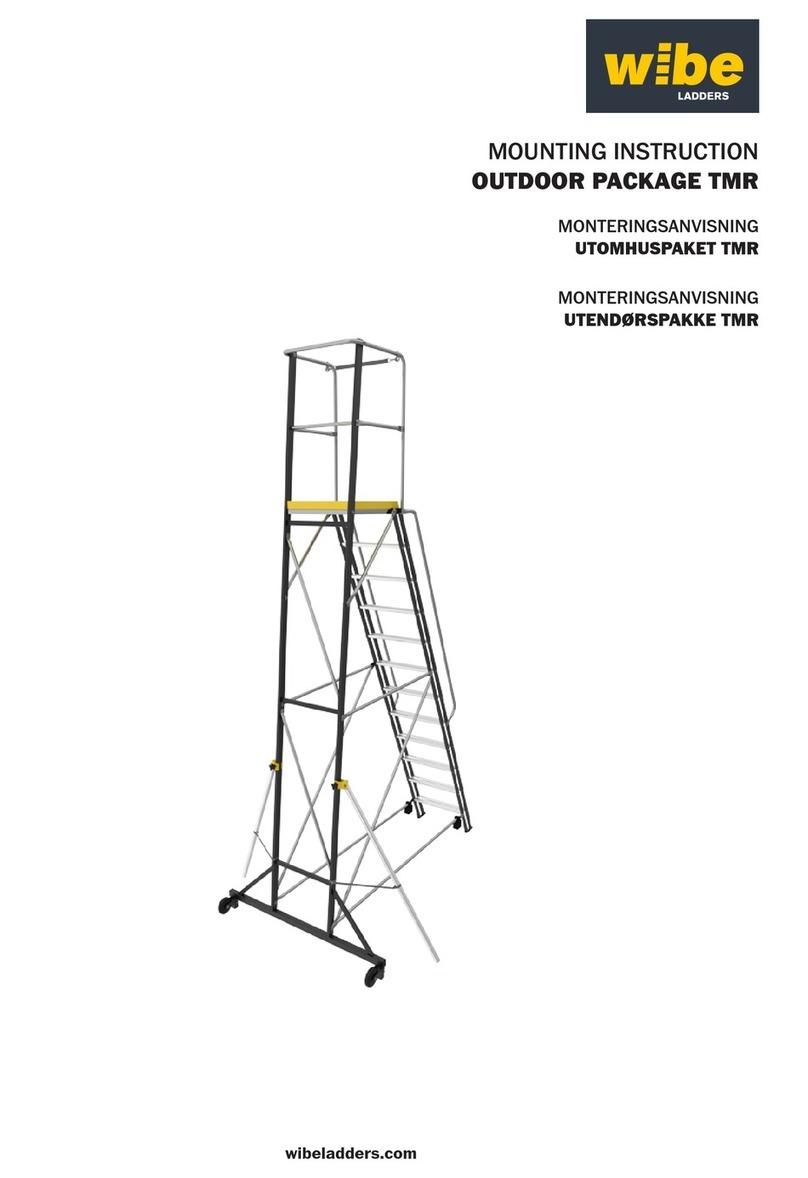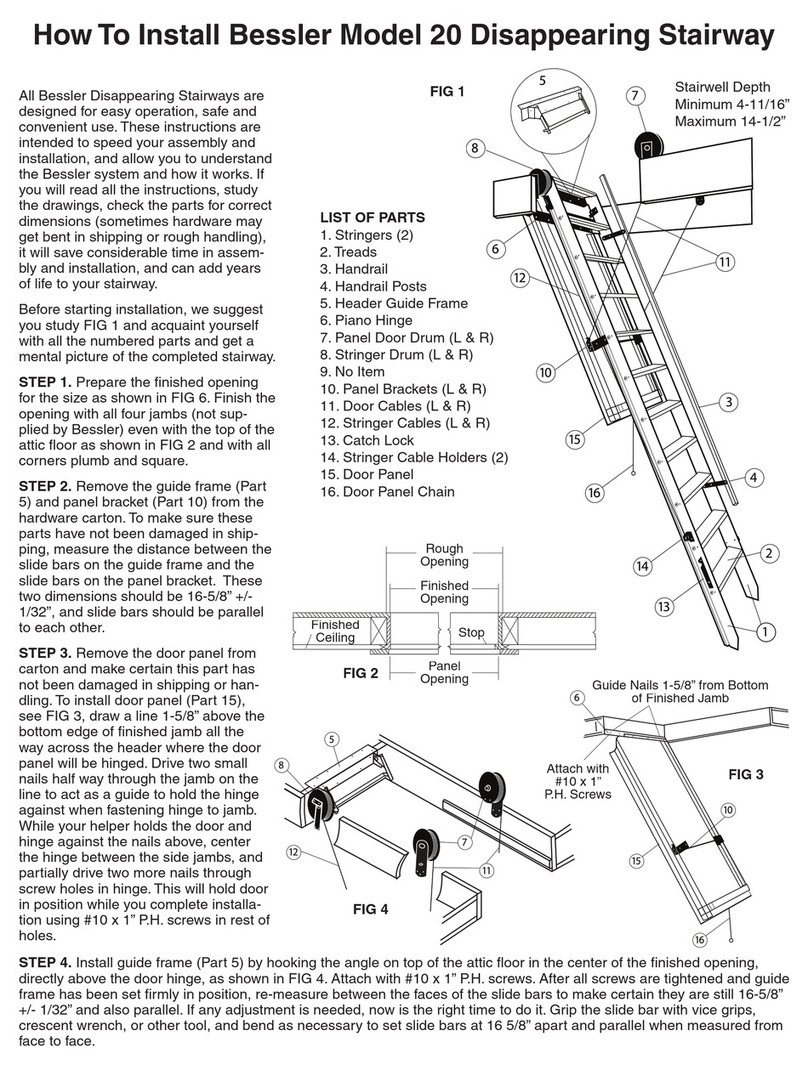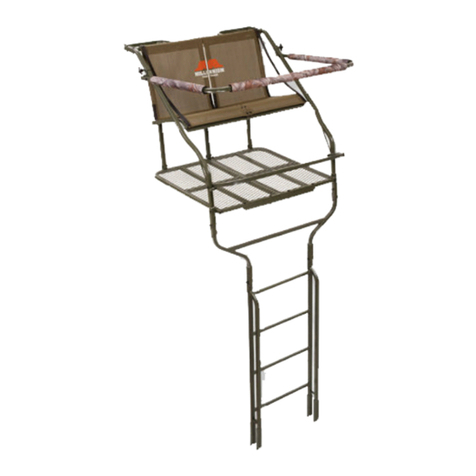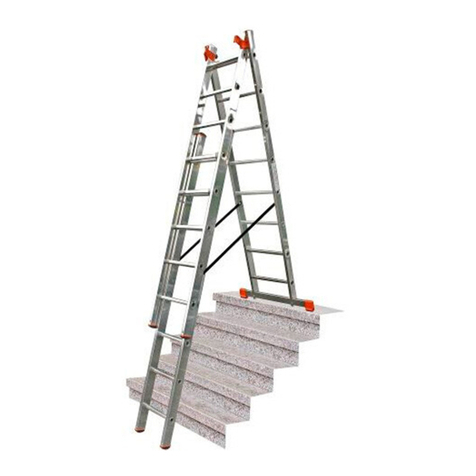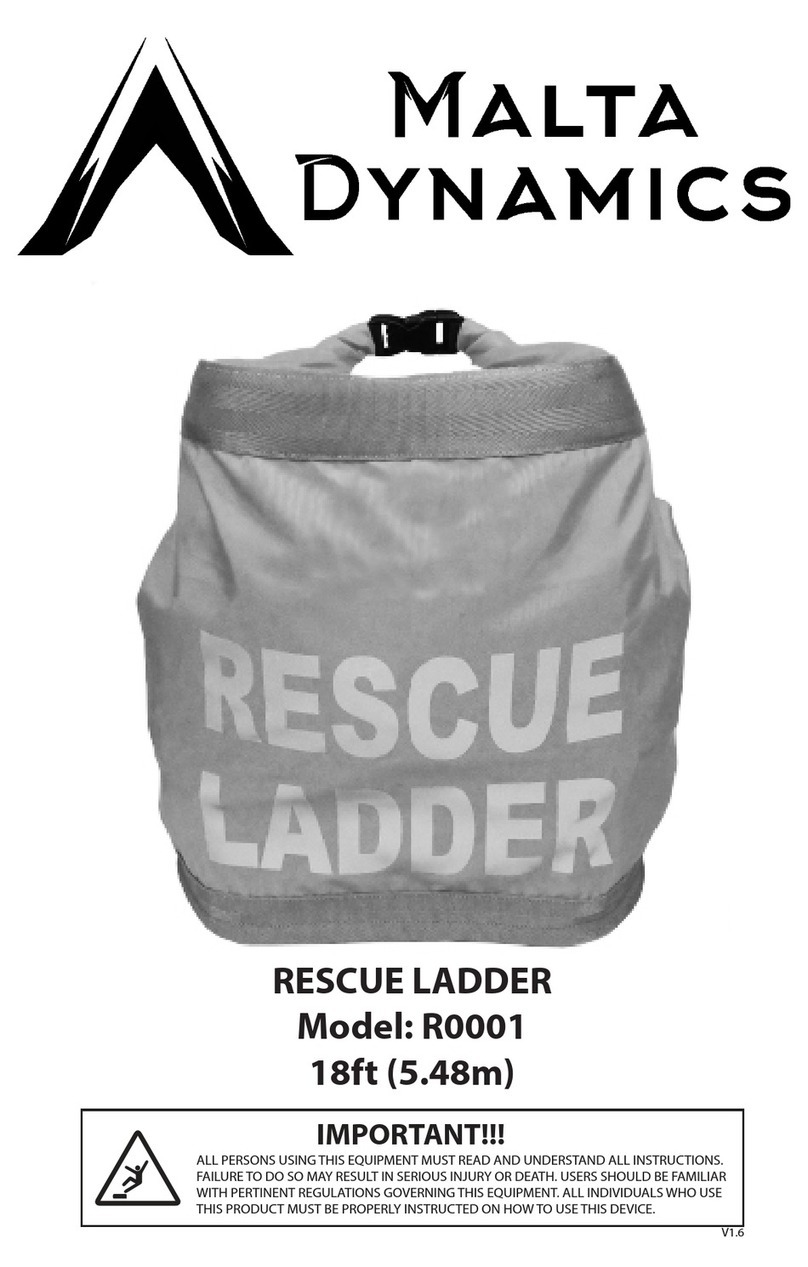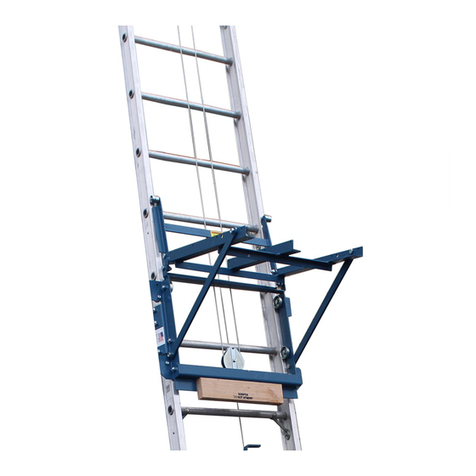
1. Informations générales aux utilisateurs
d’échelles conformément à la norme EN 131-3
1.1 Avant d’uliser l’échelle
a) Votre état de santé est-il susant pour pouvoir uliser
l’échelle ? Certains problèmes de santé, la consommaon de
médicaments, d’alcool ou de drogues peuvent représenter un
danger pour votre sécurité en cas d’ulisaon de l’échelle ;
b) Si vous transportez l’échelle sur des barres de toit ou dans
un camion, pour éviter tout dommage, assurez vous que
l’échelle soit correctement aachée/installée ;
c) Contrôlez l’échelle à la livraison et avant la première
ulisaon an de vous assurer que toutes les pièces soient en
bon état et fonconnent correctement.
d) Eectuez un contrôle visuel de l’échelle avant chaque
jour de travail pour vous assurer qu’elle ne présente aucun
dommage et qu’elle puisse être ulisée en toute sécurité ;
e) Pour les ulisateurs professionnels, un contrôle régulier est
nécessaire ;
f) Assurez-vous que l’échelle est bien adaptée à l’ulisaon
prévue ;
g) N’ulisez jamais une échelle endommagée ;
h) Éliminez toute souillure présente sur l’échelle, comme de la
peinture, de la saleté, de l’huile ou de la neige ;
i) Avant toute ulisaon professionnelle de l’échelle, une
évaluaon des risques doit être eectuée en prenant en
compte les disposions légales du pays d’ulisaon.
1.2 Mise en place et installaon de l’échelle
a) L’échelle doit être installée dans une posion correcte, par
ex. respectez l’angle de pose correct pour une échelle d’appui
(angle d’inclinaison d’env. 1:4) ;
b) Les disposifs de verrouillage, s’ils existent, doivent être
parfaitement verrouillés avant ulisaon ;
c) L’échelle doit être posée sur un support plat, horizontal et
immobile ;
d) Une échelle d’appui doit être posée contre une surface
plane et solide et doit être sécurisée avant ulisaon, par ex.
des xaons ou des disposifs adaptés doivent être ulisés
pour assurer son mainen ;
e) L’échelle ne doit jamais être déplacée depuis le haut ;
f) Lors de la mise en place de l’échelle, veillez à éviter tout
risque de collision, par ex. avec des piétons, des véhicules ou
des portes. Si possible, verrouillez les portes (sauf issues de
secours) et les fenêtres de la zone de travail ;
g) Repérez tous les risques que peuvent occasionner les
équipements électriques présents dans la zone de travail,
comme des lignes aériennes à haute tension ou d’autres
équipements électriques exposés par exemple ;
h) L’échelle doit être posée sur ses pieds, et non pas sur des
échelons ou des marches ;
i) L’échelle ne doit pas être posée sur une surface glissante (ex.
verglas, surface lisse ou surface souillée), sauf si des mesures
complémentaires permeent d’éviter que l’échelle ne dérape
ou si vous neoyez susamment les zones souillées.
1.3 Ulisaon de l’échelle
a) Ne dépassez pas la capacité de charge maximale du type
d’échelle employé ;
b) Ne vous penchez pas trop loin ; la boucle de ceinture
(nombril) de l’ulisateur doit rester entre les deux montants
de l’échelle, et ses deux pieds doivent être posés sur le même
échelon/la même marche ;
c) Ne quiez jamais une échelle d’appui en hauteur sans
disposif de sécurité supplémentaire, comme une xaon, ou
un disposif permeant d’assurer la stabilité de l’échelle ;
d) N’ulisez pas une échelle double pour monter à un niveau
supérieur ;
e) Ne restez pas sur les trois échelons/marches supérieur(e)s
de l’échelle d’appui ;
f) Ne dépassez pas le 5ème échelon en partant du haut, et
accrochez-vous bien à l’échelle pour assurer votre sécurité et
votre mainen sur l’échelle. Si l’échelle n’est que parellement
déployée, avec quelques échelons vers le haut, ne montez pas
plus haut qu’un mètre sous l’extrémité de l’échelle ;
g) Les échelles doivent uniquement être ulisées
pour eectuer des tâches faciles et de courte
durée ;
h) Si des tâches sous tension électrique sont inévitables,
n’ulisez pas une échelle conductrice ;
i) N’ulisez pas l’échelle à l’air libre lorsque les condions
météorologiques sont défavorables, par ex. en cas de fortes
rafales de vent ;
j) Prenez des mesures de précauon pour que les enfants ne
jouent pas sur l’échelle ;
k) Si possible, verrouillez les portes (sauf issues de secours) et
les fenêtres de la zone de travail ;
l) Montez et descendez le visage tourné vers l’échelle ;
m) Lors de la montée et de la descente, accrochez-vous
fermement à l’échelle ;
n) N’ulisez pas l’échelle comme passerelle ;
o) Portez des chaussures adaptées pour monter sur l’échelle ;
p) Évitez toute charge latérale excessive, par ex. lorsque vous
percez dans de la maçonnerie ou du béton ;
q) Ne restez pas trop longtemps sur l’échelle sans interrupons
régulières (la fague constue un danger) ;
r) Pour accéder à un niveau supérieur, l’échelle d’appui doit
dépasser au minimum d’1 m le point de passage ;
s) Les objets transportés en montant ou en descendant sur
une échelle ne doivent pas être lourds et doivent être faciles
à manipuler ;
t) Les acvités impliquant une forte charge latérale sur
l’échelle, par ex. un perçage dans des matériaux solides (ex.
maçonnerie ou béton) doivent être évitées ;
u) Lorsque vous travaillez sur une échelle, tenez-vous d’une
main ou, si ce n’est pas possible, prenez des mesures de
sécurité supplémentaires.
1.4 Réparaon, maintenance et stockage
Les travaux de réparaon et de maintenance de l’échelle
doivent être eectués par un professionnel dans le respect
des consignes du fabricant. L’échelle doit être stockée
conformément aux consignes du fabricant.
3

